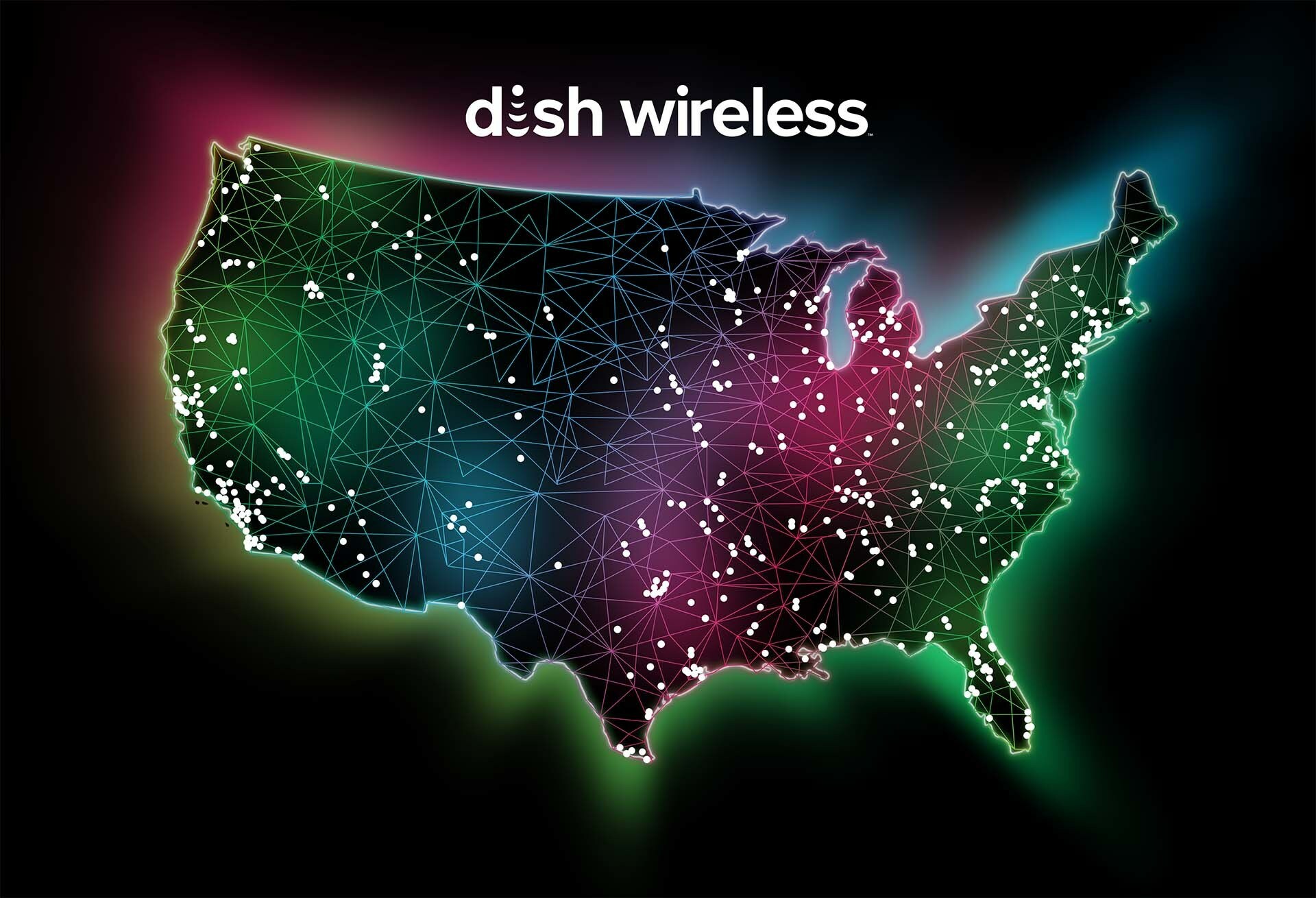Dish Wireless with Qualcomm Technologies and Samsung test simultaneous 5G 2x uplink and 4x downlink carrier aggregation
Dish Wireless collaborated with Qualcomm Technologies and Samsung to successfully test simultaneous 5G 2x uplink and 4x downlink carrier aggregation (CA) using FDD spectrum. DISH achieved 200 Mbps uplink peak speeds with just 35 MHz of 5G spectrum. The DISH 5G network executed 1.3 Gbps downlink peak speeds with just 75 MHz of 5G spectrum, both across FDD bands n71, n70 and n66. Boost Mobile and Boost Infinite subscribers will soon benefit with even faster download and upload speeds on America’s Smart Network™.
This test was completed in both DISH labs and the field using a mobile phone form-factor test device powered by Snapdragon® X75 5G Modem RF System from Qualcomm Technologies [1.] and Samsung’s 5G vRAN solution as well as dual- and tri-band radios across the DISH 5G network.
Note 1. Qualcomm’s Snapdragon X75is currently sampling to customers with commercial devices expected to launch later this year.
“It’s been a pleasure to work closely with DISH Wireless and support their expanding cloud-native Open RAN virtualized network as 5G services are now live across several markets, clearing the path for even lower latency and faster speeds,” said Mark Louison, executive vice president and general manager, Networks Business, Samsung Electronics America. “We are committed to pushing the boundaries to advance network capabilities to meet growing consumer demands for our customers.”
“We look forward to continued collaborative efforts with industry partners such as DISH and Samsung to enable faster 5G around the world,” said Sunil Patil, vice president, Product Management, Qualcomm Technologies, Inc. “As consumers demand increases for uplink heavy applications, carrier aggregation on FDD spectrum is crucial to bring faster upload speeds to more consumers across markets and networks.”
……………………………………………………………………………………………………………………………………………………………………………………………………………………………………………………………………………………
DISH claims its “Open RAN cloud-native 5G network is changing the way the world communicates,” but we don’t believe that is happening and we are not proponents of OpenRAN.
“The DISH 5G Open RAN network now covers over 73% of the U.S. population 5G broadband coverage and more than 100 million Americans 5G voice service – VoNR – with more markets going live each month,” said Eben Albertyn, EVP and CTO, DISH Wireless. “By successfully delivering 5G 2x uplink and 4x downlink carrier aggregation for FDD spectrum, DISH is now poised to deliver a better customer experience across our 5G standalone network. We look forward to continuing to pave the way to fully harness the power of 5G.”

……………………………………………………………………………………………………………………………………………………………………………………………………………………………………………………………………………………
According to Daryl Schoolar, analyst and director at Recon Analytics, this achievement is significant for Dish because while operators have been able to do downlink CA using multiple FDD bands, uplink CA is very new. DISH’s announcement comes just a little over a month after Qualcomm and Samsung announced that they had completed the world’s first simultaneous 5G 2x uplink and 4x downlink CA for FDD spectrum. Qualcomm and Samsung noted at the time that this development was important because it gives operators with fragmented FDD spectrum assets more flexibility and makes it possible for them to deliver faster upload and download speeds. Traditionally, uplink CA has been accomplished by combining FDD+TDD or TDD+TDD configurations.
Uplink capacity is becoming more critical as more consumers use uplink-heavy applications such as social media posting and video conferencing. Indeed, the possibility of delivering peak uplink speeds of 200 Mbps is quite a sizable increase from typical uplink speeds that are measured on wireless networks today. In Ookla’s Q3 2023 report on U.S. wireless networks, it reported that T-Mobile had the fastest median upload speed in the U.S. with speeds of just 11.31 Mbps.
……………………………………………………………………………………………………………………………………………………………………………………………………………………………………………………………………………………
About DISH Wireless:
DISH Wireless, a subsidiary of DISH Network Corporation (NASDAQ: DISH), is changing the way the world communicates with the Boost Wireless Network. In 2020, the company became a nationwide U.S. wireless carrier through the acquisition of Boost Mobile. DISH continues to innovate in wireless, building the nation’s first virtualized, O-RAN 5G broadband network, and is inclusive of the Boost Infinite, Boost Mobile and Gen Mobile wireless brands.
For company information, go to about.dish.com
……………………………………………………………………………………………………………………………………………………………………………………………………………………………………………………………………………………
References:
https://www.fiercewireless.com/wireless/dishs-technical-breakthrough-means-faster-speeds-customers
https://en.wikipedia.org/wiki/5G_NR_frequency_bands
Dish says its 5G network now covers 70% of the U.S. population
Dish Network to FCC on its “game changing” OpenRAN deployment
Dish Network & Nokia: world’s first 5G SA core network deployed on public cloud (AWS)


